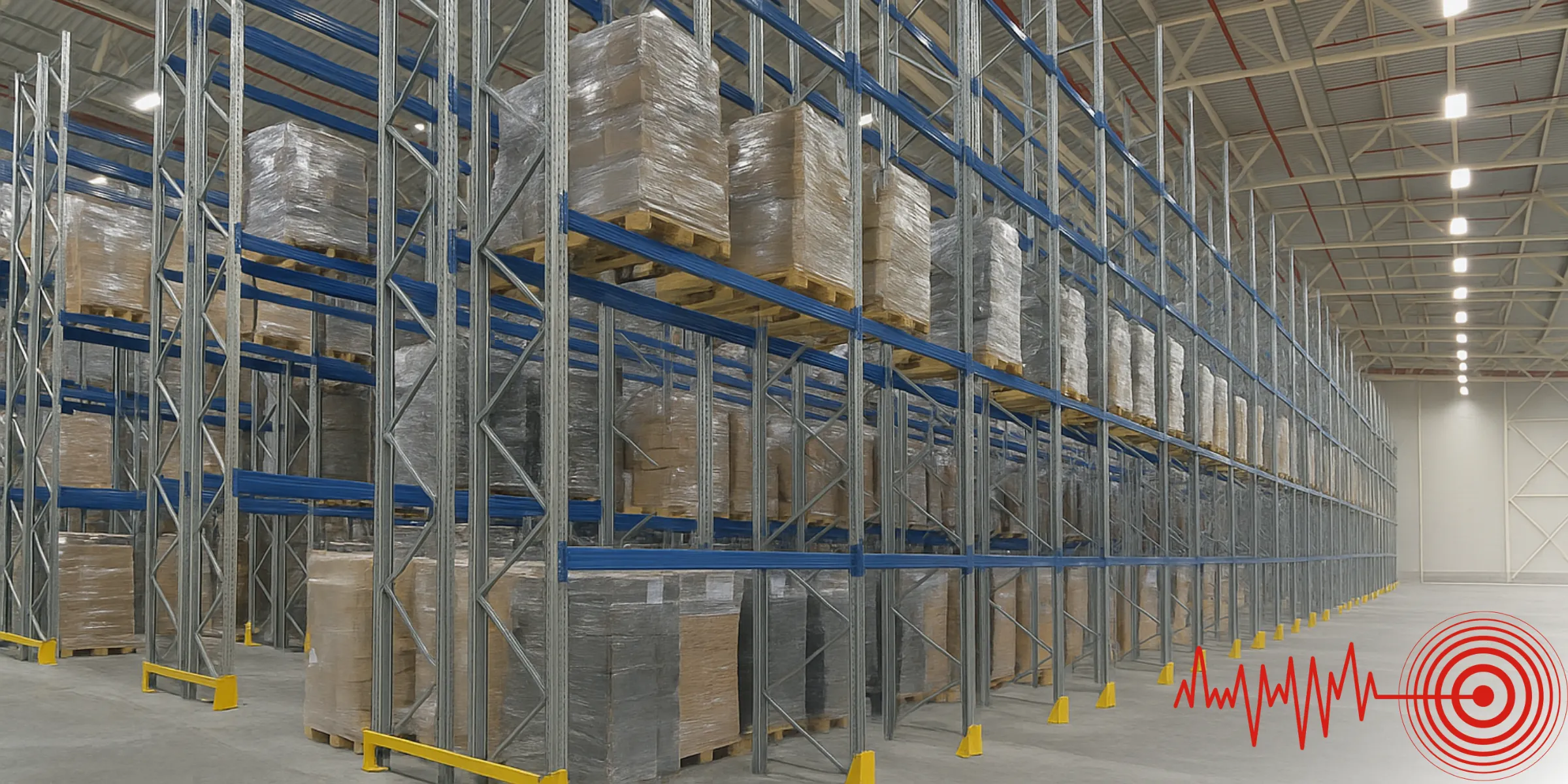
In countries like Turkey that are located in earthquake-prone zones, it is critically important for storage facilities to be constructed as safely as industrial and commercial buildings. Earthquake-resistant warehouse systems not only protect goods and inventory but also have a direct impact on employee safety. Therefore, the construction of an earthquake-resistant warehouse requires technical expertise, compliance with regulations, and the use of appropriate materials.
Depreme dayanıklı depo; deprem anında yıkılma, çökme, devrilme gibi riskleri en aza indirecek şekilde tasarlanmış, inşa edilmiş ve donatılmış yapılardır. Bu tür yapılar, yalnızca binanın taşıyıcı sistemini değil, raf sistemleri, zemin yapısı ve sabitleme elemanlarını da kapsar.
Due to its geological structure, Turkey is located in a first-degree earthquake zone. This poses a significant risk for the industrial and logistics sectors. A warehouse that is not resistant to earthquakes can lead to irreversible consequences such as the loss of millions of liras worth of products, disruption of operations, and most critically, loss of life. For this reason, choosing an earthquake-resistant warehouse system is not only a legal obligation for businesses but also an ethical and economic necessity.
Updated in 2018, the Turkish Building Earthquake Code (TBDY) outlines a wide range of criteria, from ground surveys to structural system calculations. A warehouse designed in accordance with this regulation is not only legally compliant but also provides real and effective safety. The code aims to ensure that structural elements can withstand seismic loads, that connection systems are properly designed, and that the overall integrity of the building is preserved.
One of the most vulnerable structural components during an earthquake is the racking system. The strength of these systems depends on the quality of the materials used, the integrity of connection hardware, and how well the racks are anchored. In the construction of earthquake-resistant warehouses, it is essential to use high-strength materials such as galvanized steel. Properly anchoring racks to the floor and walls significantly reduces the risk of tipping and sliding during seismic activity.
Every structurally sound building starts with a solid foundation — and that begins with the soil. In planning an earthquake-resistant warehouse, a soil survey is the very first step. Factors such as soil type, load-bearing capacity, and liquefaction risk play a critical role in determining the appropriate foundation system. When necessary, soil improvement methods should be applied, and solutions like deep foundations or raft foundations should be considered to ensure stability.
Earthquake resistance is achieved not only through structural elements but also through the proper integration of mechanical systems. Equipment such as sprinkler systems, fire suppression lines, and lighting installations must be securely anchored. Buildings that protect suspended systems from swaying or detachment significantly enhance overall safety during seismic events.
Even the best design loses its value if not implemented correctly. That’s why working with expert teams is crucial to the success of any earthquake-resistant warehouse installation. Every step — from inspecting racking connection points and applying anchorage systems to tightening bolts according to proper torque specifications — must be executed with precision and care.
In earthquake-prone regions, warehouse systems should undergo regular inspections. Racks must be checked for signs of bending, buckling, or loosened connections, and reinforcement should be carried out when necessary. Additionally, updates to regulations should be closely followed, and revisions must be implemented in a timely manner to ensure continued compliance and safety.
Earthquake-resistant warehouse systems may seem like a higher initial investment, but they provide significant long-term value for businesses. In the event of a disaster, the cost of product loss, operational downtime, or insurance claims can far exceed the initial setup costs. A secure and sustainable infrastructure not only minimizes risk but also strengthens a company’s competitive edge in the market.
Investing in earthquake-resistant warehouse systems is not only a response to today’s needs but also a safeguard against the risks of tomorrow. In a country like Turkey, this kind of investment is not optional — it’s essential. With proper engineering, high-quality materials, technical expertise, and routine inspections, it is entirely possible to build warehouse systems that are safe, efficient, and truly resistant to earthquakes.